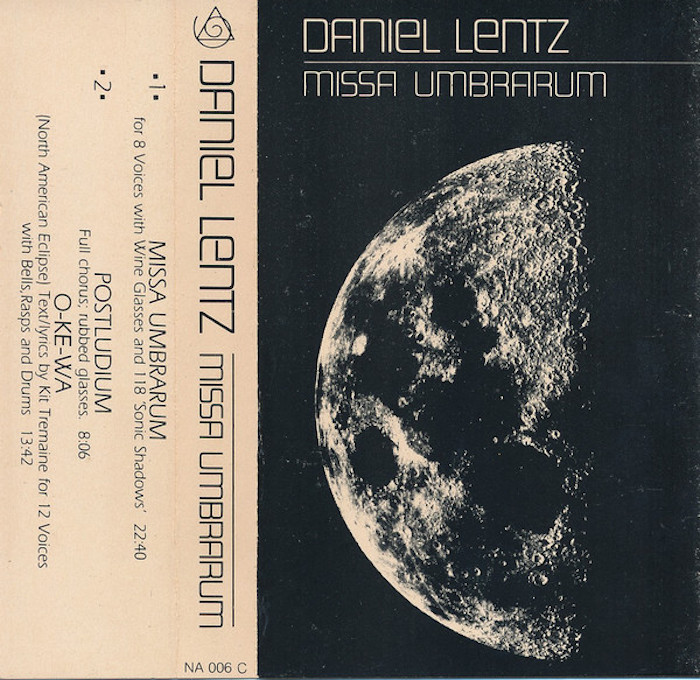
Another progressive and very beautiful collection of compositions from undersung genius Daniel Lentz. Missa Umbrarum, or “mass of shadows,” is named in part for its use of 118 “sonic shadows” in the title piece, produced using a 30 second tape delay technique. It was originally written in 1973, and a first version of “O-Ke-Wa” was written for eight voices in 1974, so I’d assume that “Postludium” was written around the same time. Though it includes a singing of the Agnus Dei, the piece explores similar tonal territory to “Lascaux,” which appears on his excellent On The Leopard Altar as well as on some later releases of Missa Umbrarum.
A mystical invocation of the Christian Last Supper, much of the titular mass employs a severe, fixated kind of devotional singing that makes me think of Geinoh Yamashirogumi, though it also includes wine glass resonance, with the pitches shifting as the singers drink. On the first repetition of a phrase, the lowest notes of the segment are played, and then the singers drink from the glasses before adding the next layer at a higher pitch. Though there are only eight voices in the piece, between this layering technique and the use of the tape delay “sonic shadows,” we eventually end up with a very large choir, cut through with the weightless ring of the glasses. Lentz has long been interested in both the sonic and aesthetic value of wine in performance–please refer to this bananas interview for more information.
The other two pieces are gentler, more pillowing explorations of vocal dialogue, the soft bubbling percussion of Native American bone rasps, and an even more expansive wine glass resonance that very much evokes a cathedral full of sound. When asked about the closing piece in an interview, Lentz had this to say:
Interviewer: “O-ke-wa (North American Eclipse),” a piece for multiple voices, drum, bone rasps and bells, is based on the O-ke-wa, the Seneca Native American dance for the dead. Ritual appears to be implicit to this 1974 piece in terms of structure and explicit in terms of performance.
Lentz: In [both versions of “O-ke-wa”], each singer is a soloist having his / her own text and melody. The melodies become the harmonies via the singers extending the notes of each of their melodies. It’s to be performed with the performers moving around the listeners, allowing individual lyrics and music to always be somewhere else when it sounds again. It is also how the original O-ke-wa dance was done in the Seneca Native American death ceremony – usually from dusk to dawn for them. The ritual element of this piece is very important to me, as it is for “Missa Umbrarum.” I am a small part Seneca, briefly a Catholic as well. The piece works best in a resonant environment.